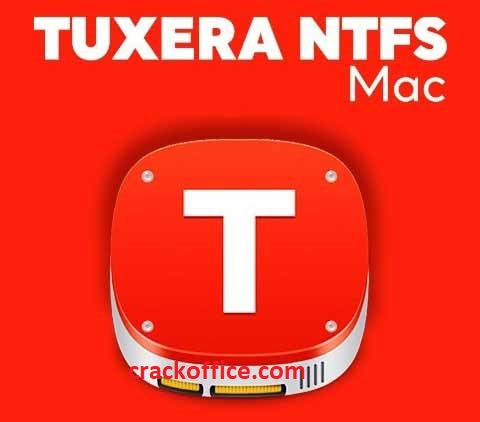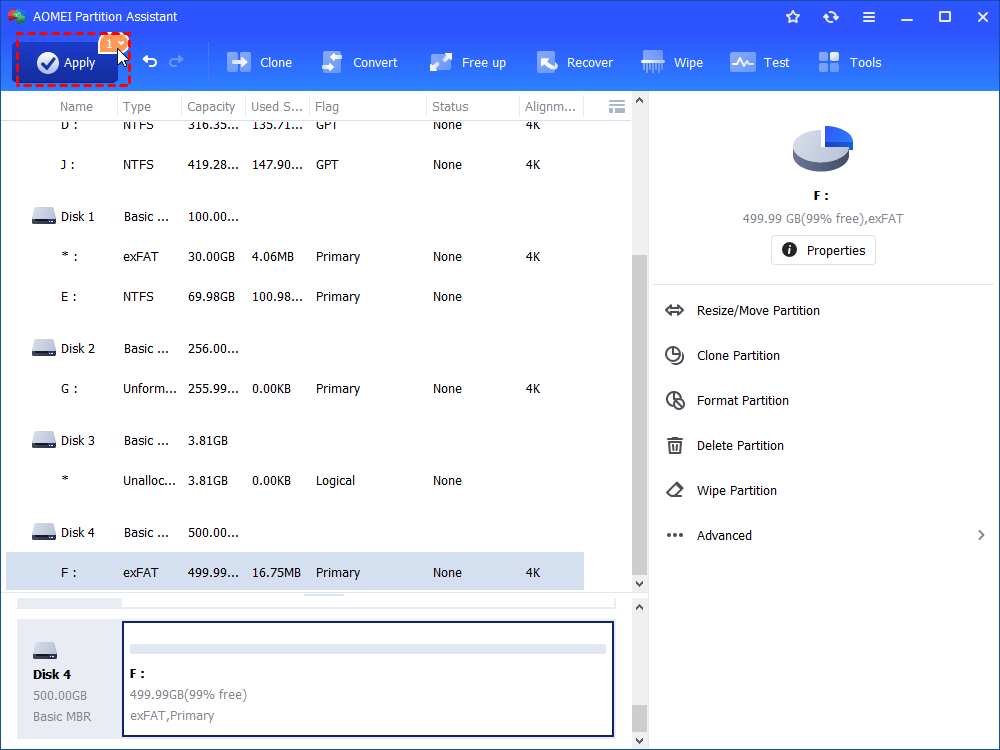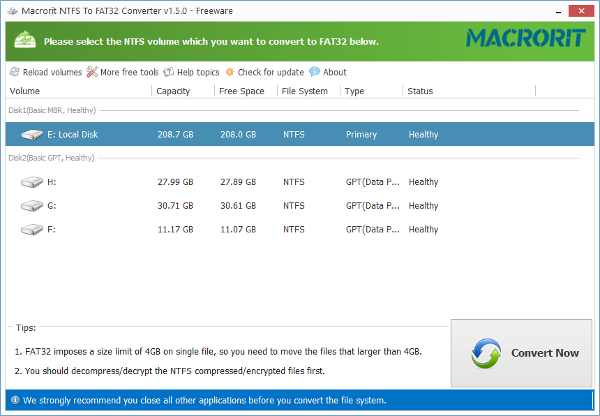Part 3: Bonus Tips to Convert “FAT32” to NTFS on Mac and Linux 1. Convert “FAT32” to “exFAT” on Mac. You can easily convert a “FAT32” file system to “exFAT” using the “Disk Utility” option on Mac. Follow the below steps for the following: Step 1: Go to “Applications”-” Utilities” and launch “Disk Utility”. NTFS is built for windows operating system therefore it is not supported by Mac. For this case, it is advisable to install programs called NTFS 3G, which works in, handy with MacFuse. Both of these are first installed in the computer. Format the External Drive to FAT32. This method is not very coinvent. Not at least for me. Professional RAW to NTFS converter to fix RAW partition, fix RAW hard drive to NTFS, convert RAW to NTFS and recover lost data from RAW drive in Windows 10/8/7/XP & Windows Server 2016/2012/2008/2003. M3 RAW to NTFS Converter has been integrated into M3 Data Recovery - RAW Drive Recovery module.
Sep 27, 2020 • Filed to: Windows Computer Solutions • Proven solutions
'exFAT' file system is the latest file system that has been launched and many people are looking to convert from the 'FAT32' to the 'exFAT' file system. This article is for those looking to convert their file systems.
This article gives a brief detail on the difference between the 'FAT32' and 'exFAT' file systems, different ways to format 'FAT32' to 'exFAT' on Windows which include using file explorer, disk management, command prompt, and AOMEI partition assistant tool. In addition to this, you can also see some bonus tips to be followed while formatting the partitions.
Part 1: 'FAT32' vs. 'exFAT': What's the Difference and Which One Is Better?
'FAT32' (File Allocation Table) is the most popular file system as it is the oldest and is used by almost every Operating system. But, 'exFAT' is the latest file system which is widely used in formatting external and USB drives. Let us understand which one is better by comparing the following
| Feature | 'FAT32' | 'exFAT' |
| Devices Supported | Compatible on any Operating system, video game consoles, media players, Android USB expansions, and many other devices | 'exFAT' is also compatible on all types of devices as 'FAT32' but it might not work for some media players and Android devices |
| Sizes Supported | Supports the files which are up to a max of 4GB in size. | There is no limit for any file sizes. So it is widely used to store large-sized files. |
| Speed | When compared to 'exFAT', 'FAT32' is slow in writing and reading data | 'exFAT' is faster than 'FAT32' in writing and reading the data |
Based on the above table, it is proven that the 'exFAT' file system is far better than the 'FAT32' file system when you have files with large sizes and need effective and efficient formatting.
Part 2: How to Format 'FAT32' to 'exFAT' on Windows?
Way 1. Format 'FAT32' to 'exFAT' in File Explorer
Using File Explorer, you can format the flash drive from 'FAT32' to 'exFAT' easily and effectively following the below steps:
Step 1: Open File Explorer by pressing 'Windows' + 'E' keys.
Step 2: In the explorer look for your USB flash drive and right-click on it.

Step 3: Click on 'Format' and select 'exFAT' from the 'File System' list.
Step 4: Click the 'Start' button in the end.
Way 2: Convert 'FAT32' to 'exFAT' using CMD
You can convert 'FAT32' to 'exFAT' using a CMD prompt if you know the commands to perform the Diskpart. To use this Diskpart tool, you need to follow the below steps:
Step 1: Open Run dialog box and type 'diskpart ' to the run the Diskpart.
Step 2: Type the following command and press enter after every command:
- 'list disk'
- 'select disk n'
- 'list partition'
- 'select partition m'
- 'format fs = 'exFAT'
From above n = no of external drives, m = no of external drive partitions.
Step 3: Once all the above commands are executed, the formatting progress will be completed within a short time.
Way 3: Convert 'FAT32' to 'exFAT' with Windows Disk Management
Windows Disk Management is an effective built-in feature provided by Windows which helps you in managing the hard disk partitions without any difficulties or errors. It might not be an effective solution when compared to other third-party tools but it is enough to convert 'FAT32' to 'exFAT'. For this follow the below steps:
Step 1: Open 'Disk Management' by right-clicking on the Windows start menu.
Step 2: Select the 'FAT32' formatted partition, right-click on it and click on 'Format'.
Step 3: In the format page, change the 'file system' to 'exFAT' from 'FAT32' and click on 'Ok'.
Step 4: Now the formatting process will start and you may lose all your data so make sure that the important data is taken as a backup.
Step 5: Once the formatting is done, you can see that 'FAT32' is converted to 'exFAT' in the disk management interface.
Way 4: Format 'FAT32' to 'exFAT' through a third-party converter
Generally, the above-mentioned methods may or may not work as they may face issues like write-protection, file system corruption, etc. In such cases, third-party tools like the AOMEI partition assistant can give better results in formatting the 'FAT32' to the 'exFAT' file system. Follow the below steps for using the AOMEI partition assistant tool.
An important point to note is to take a backup of all the important files and data because once the formatting has been started, you may lose all your data and it will be difficult to retrieve the data.
Follow the below steps for using the AOMEI partition assistant tool.
Step 1: Launch AOMEI
Download, install, and double click on the AOMEI icon to launch the AOMEI partition assistant tool.
Step 2: Format Partition
In the interface, choose the drive that you wish to format and right-click on it. In the menu displayed, click on 'Format Partition'.
Step 3: Choose 'exFAT'
In the 'Format Partition' interface, select 'exFAT' from the file system menu. 'Partition Label' and 'Cluster Size' can be added as per the need. Click on 'Ok' and 'Apply' to perform the formatting.
Following the above-mentioned steps, you can format your disk partition or drive from 'FAT32' to 'exFAT' easily and effectively.
Part 3: Bonus Tips to Convert 'FAT32' to NTFS on Mac and Linux
1. Convert 'FAT32' to 'exFAT' on Mac
You can easily convert a 'FAT32' file system to 'exFAT' using the 'Disk Utility' option on Mac. Follow the below steps for the following:
Step 1: Go to 'Applications'->' Utilities' and launch 'Disk Utility'.
Step 2: In the Disk Utility interface, select the external drive that you want to format.
Step 3: Under the 'Erase' tab, select the 'exFAT' file type from the menu list.
Step 4: Click on the 'Erase' button to start the formatting from 'FAT32' to 'exFAT'.
2. Format 'FAT32' to 'exFAT' on Linux
To format 'FAT32' to 'exFAT' file system on Linux, follow the below steps:
Step 1: To view all the drives attached to your system, type sudo fdisk -l in the command line.
Step 2: Select the drive that you want to format and type sudo wipefs -a /dev/sdb to start fresh with a new 'exFAT' file system
Step 3: Follow the on-screen instructions and select 'exFAT' from the message 'HPFS/NTFS/exFAT' it displays
Step 4: Press 'w' to sync the disk partitions.
Step 5: Type sudo mkfs.'exFAT' -n hardDisk /dev/sdb1 to format your drive to 'exFAT'

The Bottom Line
As mentioned in the article, different ways can be used to convert or format from the 'FAT32' to the 'exFAT' file system. Follow all the above-mentioned procedures to easily and effectively format your drive.
While formatting your drive using file explorer, command prompt, or disk management, you may find some trouble because of the issues like write-protection, file system corruption, etc. So, it is recommended to use the 'AOMEI Partition Assistant' a third party tool which provides an interactive and easy to use interface to format effectively without any interruptions.
People Also Ask
When compared to 'FAT32', 'exFAT' is a better file system type in the following aspects:
- There is no file size limit for 'exFAT', but 'FAT32' can support up to a size of 4GB only.
- 'exFAT' file system performs faster writing and reading of data when compared to 'FAT32'.
You can convert 'FAT32' to 'exFAT' on Mac using the Disk utility option that it provides. In the disk utility, follow the below steps:
- Select the disk partition that you want to format from the list of disks displayed on the left pane of the interface.
- Under erase tab->File system, select 'exFAT' and click on erase.
This will format your partition completely with file type as 'exFAT'.
How do I convert my flash drive from 'exFAT' to 'FAT32'?
Converting your flash drive from 'exFAT' to 'FAT32' has become very easy now. Follow the below steps to format:
- Double-click on 'This PC' and from the list of drives select the flash drive.
- Right-click on the flash drive and click 'Format'.
- In the Format window, select the 'file type' as 'FAT32'.
- Click on Format.
Partition Recovery
- Partition Management
- Solve Partition Problems
- Partition Tips
One of the most usual problems encountered in file transfer between Mac and PC using a disk has something to do with disk format. Windows natively support the FAT and NTFS files systems, while Mac uses Apple File System and macOS Extended as the default file system. It’s well-known that Apple macOS has limited support for hard drives formatted in NTFS. When you insert an NTFS external drive in your Mac, you can only read from but not to write to the drive. In other words, you can only open and view all the files on an NTFS disk, but you can’t change them in any way, nor can you copy new files to NTFS format disks.
Wondering how to write to NTFS drives? The following will show you three solutions in detail.
Solution 1: Use paid NTFS drivers
The easiest way to bridge the gap between formats is to use third-party software. There are various apps available online that have been developed for this incompatibility issue. Some are free, but they may be difficult to set up and less reliable. So we highly recommend paid ones as they are safer and require any computer skills.
iBoysoft NTFS for Mac is the fastest NTFS driver I have ever used. It gives your Mac the ability to read and write to NTFS drives. With the software, you can delete, rename, add files and folders on NTFS formatted drives on macOS Catalina and earlier. It delivers blazing-fast read-write access to NTFS hard drives with a speed of up to six times more that of other competitors.
The program can also be used as a disk manager that enables you to unmount, erase, check and repair NTFS disks within one click. Besides handling NTFS drives, iBoysoft NTFS for Mac also impress you by formatting FA32/exFAT/HFS+/APFS drives to NTFS.
iboysoft-NTFS-for-mac-Catalina
Step 1: Download and install iBoysoft NTFS for Mac on your Mac computer.
Step 2: Plug the NTFS drives on your Mac. Once the drive is detected, a Finder window with its content will pop out. Then you can read and write to NTFS drives as you wish.
Solution 2: Use free NTFS drivers
FUSE for macOS is the most famous free NTFS driver that can let you extend the list of file systems handled by your computer. Once installed, it automatically mounts NTFS drives on Mac in read-write mode.
Note: this method will be very technical and tedious. During the process, you have to temporarily disable System Integrity Protection that is a risk for your operating system.
Step 1: Download FUSE for macOS from https://github.com/osxfuse/osxfuse/releases
Step 2: Download and install Xcode command-line tools.
- Open a Terminal window from Finder > Applications > Utilities and run the following command:
Xcode-select –install
- Click “Install” when you’re prompted to install the tools. Follow the wizard to complete the installation process.
install-Xcode
Step 3: Download and install HomeBrew.
- Go to Finder > Applications > Utilities > Terminal.
- Copy and paste the command line (Provide your password when prompt):

Step 4: Install NTFS-3G for Mac. Copy and paste the following command line, then hit Enter.
Step 5: Disable SIP (System Integrity Protection). If you want to automatically mount NTFS drives in read-write mode.
- Enter into Recovery Mode. Restart your Mac and press Command+R while it’s booting.
- Launch Terminal from the utility menu in Recovery Mode.
- Type in the command line and hit Enter.
csrutil disable
disable-sip
- After your Mac successfully disabled SIP, you need to restart the machine.
Step 6: Read and write to NTFS drives.
- Open Terminal again.
- Copy and paste the following command line and hit Enter:
Step 7: Re-enable SIP. To ensure the security of your Mac, you should enable SIP after the above operations. Hold Command+R while rebooting your computer. Then launch Terminal in Recovery Mode and run csrutil enable.
Solution 3: Enable NTFS drive write support natively
Actually, NTFS write access can be enabled natively by running some command line. But this solution is unsupported officially by Apple, which may work unstably and cause data corruption. Please back up your important data first. Within this in mind, let’s proceed.
Step 1: Connect an NTFS drive to your Apple computer.
Step 2: Go to Finder > Applications > Utilities > Terminal and type in the following command: (Enter your password when prompt)
sudo nano /etc/fstab
apple-NTFS-write-support-step-2
Step 3: You will see the fstab file that is blank. Then enter the following command (Remember to replace “VOLUME_NAME” to the name of your NTFS volume):

LABEL=VOLUME_NAME none ntfs rw,auto,nobrowse
apple-ntfs-write-support-step
Step5: Reconnect the NTFS drive to your Mac. You will notice the drive does not show in the Finder or desktop.
Step 6: Select “Go” and choose “Go to Folder” from the top left Finder menu.
Step 7: Type in /Volumes and hit Enter.
apple-ntfs-write-support-step
Read Also:
Conclusion
Ntfs Convert For Mac Mojave
This article has introduced you three general options to write to NTFS drives – free NTFS drivers, paid NTFS for drivers, and Apple experimental NTFS-write support. Free and open-source NTFS drivers for Mac take a bit of work to install and they are slower than paid ones. It’s full of risk to Apple experimental NTFS-write support as this method is not stable. Therefore, using paid NTFS for Mac apps like iBoysoft NTFS for Mac is the easiest way to read/write to NTFS drives on Mac. This software really surprises me for its fast speed in reading and writing to NTFS drives.
